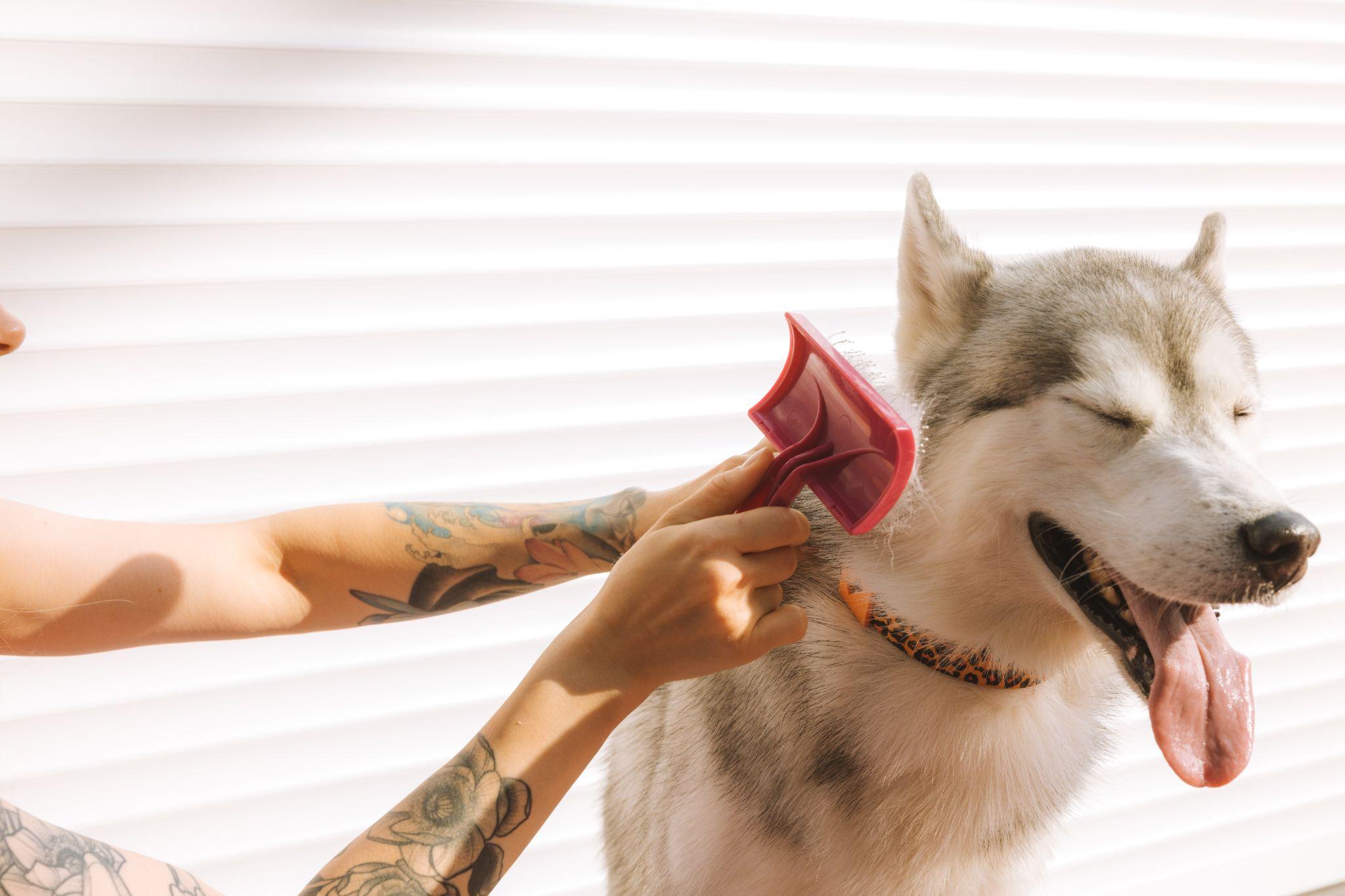
Dog fur is a concern for all dog owners. Even prospective dog owners worry about how much their new dog might shed. If you’ve been thinking about getting a new dog or puppy, how much your puppy is going to shed can become a factor in deciding on the dog breed you end up getting. Malamutes, Chow Chows, and Huskies, and Golden Retriever puppies are known for being shedders due to their thick lush coats.
Thankfully, there is something you can do to reduce the amount of shedding that your dog does, while also helping keep their coat healthy. It’s called deshedding, and it’s good to learn why you should do it for your dog.
What Is Deshedding?
Deshedding is the process of removing excess fur from a pet’s coat. This can be done through either brushing or clipping the fur, although clipping is more commonly used. The purpose of deshedding is to keep the pet’s coat healthy and free of tangles and mats. It also reduces the amount of loose fur that accumulates in your home, which can be a nuisance to clean up.
When a dog sheds, it loses its old dead fur, which helps make room for new growth. Not all pets shed the same amount or at the same rate; dogs with long coats tend to shed more often than those with shorter coats.
Some breeds also have a heavy shedding season in the spring and autumn, while others may only need occasional deshedding. Regardless of breed, all dogs can benefit from regular deshedding.
How Can You Tell if You Need to Deshed Your Dog?
To determine if your pet needs deshedding, you need to know their specific shedding schedule. Dogs that have seasonal shedding will not need to have a deshedding treatment very often, and can usually wait until just before they are about to “blow coat” and fill your house with loose fur.
Dogs that shed throughout the year may benefit from regular deshedding, around once every quarter of the year.
Deshedding Tools
Deshedding can be done using a variety of tools. The most common type of deshedding tool is a deshedding brush or comb. Brushes and combs are designed to help gently remove loose fur from an animal’s coat without damaging it.
The type of brush or comb you choose will depend on the type of fur your pet has and how often you plan on brushing them. For example, a soft-bristled brush is ideal for short-haired dogs, while a slicker brush is better suited for long-haired breeds. It’s important to always use gentle strokes when brushing or combing your pet’s coat, as too much pressure can cause damage or discomfort.
In addition to brushes and combs, there are also deshedding blades available on the market. These blades are usually made with stainless steel and feature special teeth that work to cut through loose fur without harming the dog’s skin or coat. They are especially effective when it comes to removing mats and tangles from longer coats.
Some dog owners and groomers prefer deshedding blades because they tend to be easier and faster than using a traditional brush or comb. However, it is important to take extra care when using these blades, as improper use can lead to skin irritation or even cuts on your pet’s skin.
How to Deshed Your Dog
If you’re unsure about how much hair should be removed from your dog’s coat during deshedding sessions, it’s best to consult your veterinarian or a groomer for advice. There’s also nothing wrong with going to a professional for a deshedding treatment, since you won’t need to do it very often.
Step 1: Prepare Your Dog
Start by brushing through your dog’s coat with a wide-toothed comb or brush to remove any tangles or mats that could get in the way of the deshedding process later on. Make sure to be gentle and careful so that the mats and tangles don’t pull too hard on your dog’s skin.
Step 2: Start Deshedding
Once their coat is free of tangles, use your deshedding tool to go over their entire body in sections, starting at the neck and working down towards the tail. Work slowly and gently to ensure that no skin is irritated by the process – if it starts getting uncomfortable for them, stop and take a break before continuing.
Step 3: Trim Away Dead Hair and Mats
Use scissors to carefully trim away any dead hair or mats that are still stuck in their fur after you’ve finished using the deshedding tool. This will help keep their coat looking neat and healthy! Make sure not to cut too close to their skin – just enough so that the mats are removed without causing discomfort for them.
Step 4: Finish Up and Reward
When you’ve finished going over every inch of their coat with both tools, give them one last brush-through so that everything looks neat and tidy. Don’t forget to reward them with lots of treats for being such a good sport throughout this process.
Leave a Reply